#1950s Singapore
Text
A Singapore in transition: SIT
Among American photo-journalist Harrison Forman’s vast collection of some 50,000 photographs, found in the American Geographical Society Library of the University of Wisconsin–Milwaukee are the wonderfully captured scenes of a Singapore in 1941. The photographs, which include a number of rare colour captures, provide a glimpse of the bustling colony that Singapore was, just as preparations were…

View On WordPress
#1950s#1950s Singapore#Architecture#Changing Landscapes#Forgotten Places#Harrison Forman#Harrison Forman Collection#Old Photographs#Old Places#Old Singapore#Photographs#Photography#Public Housing#Singapore#Singapore Improvement Trust#SIT#SIT Flats#Urban Redevelopment
1 note
·
View note
Link

2 notes
·
View notes
Text
"Namibia is the driest country in Sub-Saharan Africa, and home to two of the world’s most ancient deserts, the Kalahari and the Namib. The capital, Windhoek, is sandwiched between them, 400 miles away from the nearest perennial river and more than 300 miles away from the coast. Water is in short supply.
It’s hard to imagine life thriving in Windhoek, yet 477,000 people call it home, and 99 per cent of them have access to drinking water thanks to technology pioneered 55 years ago on the outskirts of the city. Now, some of the world’s biggest cities are embracing this technology as they adapt to the harshest impacts of climate change. But Namibia leads the way.
How did this come about? In the 1950s, Windhoek’s natural resources struggled to cope with a rapidly growing population, and severe water shortages gripped the city. But disaster forced innovation, and in 1968 the Goreangab Water Reclamation Plant in Windhoek became the first place in the world to produce drinking water directly from sewage, a process known as direct potable reuse (DPR).
That may sound revolting, but it’s completely safe. Dr Lucas van Vuuren, who was among those who pioneered Windhoek’s reclamation system, once said that “water should not be judged by its history, but by its quality”. And DPR ensures quality.
This is done using a continuous multi-barrier treatment devised in Windhoek during eight years of pilot studies in the 1960s. This process – which has been upgraded four times since 1968 – eliminates pollutants and safeguards against pathogens by harnessing bacteria to digest the human waste and remove it from the water. This partly mimics what happens when water is recycled in nature, but Windhoek does it all in under 24 hours...

Pictured: These ultrafiltration membranes help to remove bacteria, viruses and pathogens. Image: Margaret Courtney-Clarke
“We know that we have antibiotics in the water, preservatives from cosmetics, anti-corrosion prevention chemicals from the dishwasher,” Honer explains. “We find them and we remove them.”
Honer adds that online instruments monitor the water continuously, and staff ensure that only drinking water that meets World Health Organisation (WHO) guidelines is sent to homes. If any inconsistencies are detected, the plant goes into recycle mode and distribution is halted until correct values are restored.
“The most important rule is, and was, and always will be ‘safety first’,” says Honer. The facility has never been linked to an outbreak of waterborne disease, and now produces up to 5.5m gallons of drinking water every day – up to 35 per cent of the city’s consumption.
Namibians couldn’t survive without it, and as water shortages grip the planet, Windhoek’s insights and experience are more important than ever.
Interest from superpowers across the globe
In recent years, delegations from the US, France, Germany, India, Australia, Singapore, and the United Arab Emirates have visited Windhoek seeking solutions to water shortages in their own countries.
Megadrought conditions have gripped the US since 2001, and the Colorado River – which provides 40 million people with drinking water – has been running at just 50 per cent of its traditional flow. As a result, several states including Texas, California, Arizona and Colorado are beginning to embrace DPR.
Troy Walker is a water reuse practice leader at Hazen and Sawyer, an environmental engineering firm helping Arizona to develop its DPR regulations. He visited Windhoek last year. “It was about being able to see the success of their system, and then looking at some of the technical details and how that might look in a US facility or an Australian facility,” he said. “[Windhoek] has helped drive a lot of discussion in industry. [Innovation] doesn’t all have to come out of California or Texas.”

Pictured: The internal pipes and workings of Namibia's DPR plant. As water becomes scarcer in some parts, countries are looking to DPR for solutions. Image: Margaret Courtney-Clarke
Namibia has also helped overcome the biggest obstacle to DPR – public acceptance. Disgust is a powerful emotion, and sensationalist ‘toilet to tap’ headlines have dismantled support for water reuse projects in the past. Unfortunately, DPR’s biggest strength is also its biggest weakness, as the speed at which water can re-enter the system makes it especially vulnerable to prejudice, causing regulators to hesitate. “Technology has never been the reason why these projects don’t get built – it’s always public or political opposition,” says Patsy Tennyson, vice president of Katz and Associates, an American firm that specialises in public outreach and communications.
That’s why just a handful of facilities worldwide are currently doing DPR, with Windhoek standing alongside smaller schemes in the Philippines, South Africa and a hybrid facility in Big Spring, Texas. But that’s all changing. Drought and increased water scarcity worldwide are forcing us to change the way we think about water.
Now, the US is ready to take the plunge, and in 2025, El Paso Water will begin operating the first ‘direct to distribution’ DPR facility in North America, turning up to 10m gallons of wasterwater per day into purified drinking water – twice as much as Windhoek. San Diego, Los Angeles, California, as well as Phoenix, Arizona are also exploring the technology."
Of course, DPR is not a silver bullet in the fight against climate change. It cannot create water out of thin air, and it will not facilitate endless growth. But it does help cities become more climate resilient by reducing their reliance on natural sources, such as the Colorado River.
As other nations follow in Namibia’s footsteps, Windhoek may no longer take the lead after almost six decades in front.
“But Windhoek was the first,” Honer reminds me. “No one can take that away.”"
-via Positive.News, August 30, 2023
#namibia#africa#desert#water shortage#water conservation#dpr#potable water#water recycling#clean water#drought#united states#colorado river#science and technology#sanitation#good news#hope
2K notes
·
View notes
Text
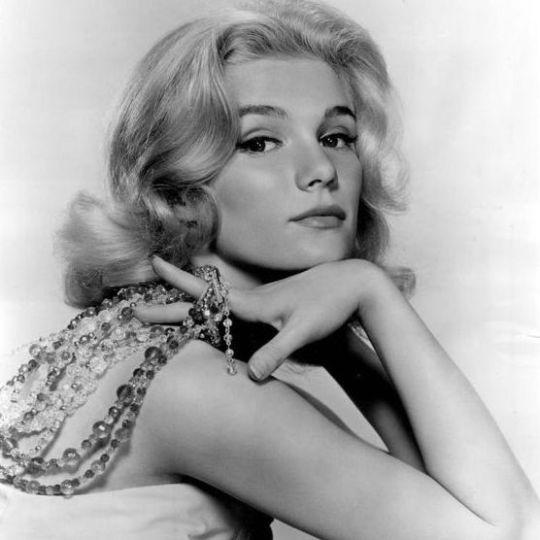

Propaganda
Yvette Mimieux (Dark of the Sun; Joy in the Morning; Where the Boys Are)—She is so enchanting on screen... that ethereal presence paired with her dark, sparkling eyes gives her an almost dream-like quality...
Xia Meng, also known as Hsia Moog or Miranda Yang (Sunrise, Bride Hunter)—For those who are familiar with Hong Kong's early cinema, Xia Meng is THE leading woman of an era, the earliest "silver-screen goddess", "The Great Beauty" and "Audrey Hepburn of the East". Xia Meng starred in 38 films in her 17-year career, and famously had rarely any flops, from her first film at the age of 18 to her last at the age of 35. She was a rare all-round actress in Mandarin-language films, acting, singing, and dancing with an enchanting ease in films of diverse genres, from contemporary drama to period operas. She was regarded as the "crown princess" among the "Three Princesses of the Great Wall", the iconic leading stars of the Great Wall Movie Enterprises, which was Hong Kong's leading left-wing studio in the 1950s-60s. At the time, Hong Kong cinema had only just taken off, but Xia Meng's influence had already spread out to China, Singapore, etc. Overseas Chinese-language magazines and newspapers often featured her on their covers. The famous HK wuxia novelist Jin Yong had such a huge crush on her that he made up a whole fake identity as a nobody-screenwriter to join the Great Wall studio just so he can write scripts for her. He famously said, "No one has really seen how beautiful Xi Shi (one of the renowned Four Beauties of ancient China) is, I think she should be just like Xia Meng to live up to her name." In 1980, she returned to the HK film industry by forming the Bluebird Movie Enterprises. As a producer with a heart for the community, she wanted to make a film on the Vietnam War and the many Vietnam War refugees migrating to Hong Kong. She approached director Ann Hui and produced the debut film Boat People (1982), a globally successful movie and landmark feature for Hong Kong New Wave, which won several awards including the best picture and best director in the second Hong Kong Film Award. Years later, Ann Hui looked back on her collaboration with Xia Meng, "I'm very grateful to her for allowing me to make what is probably the best film I've ever made in my life."
This is round 1 of the tournament. All other polls in this bracket can be found here. Please reblog with further support of your beloved hot sexy vintage woman.
[additional propaganda submitted under the cut]
Yvette Mimieux:


Xia Meng:

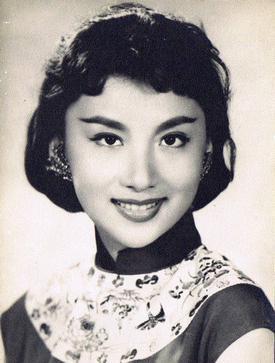

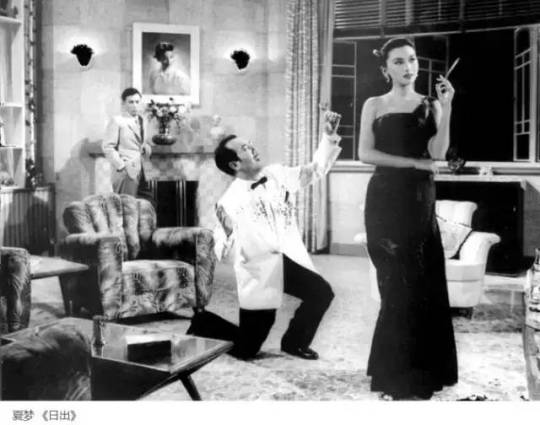

423 notes
·
View notes
Note
original anon here tysm for the recs ! if the marxist frameworks was too limiting im also completely fine w general postcolonial botany readings on the topic :0
A Spiteful Campaign: Agriculture, Forests, and Administering the Environment in Imperial Singapore and Malaya (2022). Barnard, Timothy P. & Joanna W. C. Lee. Environmental History Volume: 27 Issue: 3 Pages: 467-490. DOI: 10.1086/719685
Planting Empire, Cultivating Subjects: British Malaya, 1786–1941 (2018). Lynn Hollen Lees
The Plantation Paradigm: Colonial Agronomy, African Farmers, and the Global Cocoa Boom, 1870s--1940s (2014). Ross, Corey. Journal of Global History Volume: 9 Issue: 1 Pages: 49-71. DOI: 10.1017/S1740022813000491
Cultivating “Care”: Colonial Botany and the Moral Lives of Oil Palm at the Twentieth Century’s Turn (2022). Alice Rudge. Comparative Studies in Society and History Volume: 64 Issue: 4 Pages: 878-909. DOI: 10.1017/S0010417522000354
Pacific Forests: A History of Resource Control and Contest in Solomon Islands, c. 1800-1997 (2000). Bennett, Judith A.
Thomas Potts of Canterbury: Colonist and Conservationist (2020). Star, Paul
Colonialism and Green Science: History of Colonial Scientific Forestry in South India, 1820--1920 (2012). Kumar, V. M. Ravi. Indian Journal of History of Science Volume: 47 Issue 2 Pages: 241-259
Plantation Botany: Slavery and the Infrastructure of Government Science in the St. Vincent Botanic Garden, 1765–1820 (2021). Williams, J'Nese. Berichte zur Wissenschaftsgeschichte Volume: 44 Issue: 2 Pages: 137-158. DOI: 10.1002/bewi.202100011
Angel in the House, Angel in the Scientific Empire: Women and Colonial Botany During the Eighteenth and Nineteenth Centuries (2020). Hong, Jiang. Notes and Records: The Royal Society Journal of the History of Science Volume: 75 Issue: 3 Pages: 415-438. DOI: 10.1098/rsnr.2020.0046
From Ethnobotany to Emancipation: Slaves, Plant Knowledge, and Gardens on Eighteenth-Century Isle de France (2019). Brixius, Dorit. History of Science Volume: 58 Issue: 1 Pages: 51-75. DOI: 10.1177/0073275319835431
African Oil Palms, Colonial Socioecological Transformation and the Making of an Afro-Brazilian Landscape in Bahia, Brazil (2015). Watkins, Case. Environment and History Volume: 21 Issue: 1 Pages: 13-42. DOI: 10.3197/096734015X14183179969700
The East India Company and the Natural World (2015). Ed. Damodaran, Vinita; Winterbottom, Anna; Lester, Alan
Colonising Plants in Bihar (1760-1950): Tobacco Betwixt Indigo and Sugarcane (2014). Kerkhoff, Kathinka Sinha
Science in the Service of Colonial Agro-Industrialism: The Case of Cinchona Cultivation in the Dutch and British East Indies, 1852--1900 (2014). Hoogte, Arjo Roersch van der & Pieters, Toine. Studies in History and Philosophy of Science Part C: Studies in History and Philosophy of Biological and Biomedical Sciences Volume: 47 Issue: Part A Pages: 12-22
Trading Nature: Tahitians, Europeans, and Ecological Exchange (2010). Newell, Jennifer
The Colonial Machine: French Science and Overseas Expansion in the Old Regime (2011). McClellan, James E. & Regourd, François
Colonial Botany: Science, Commerce, and Politics in the Early Modern World (2005). Ed. Schiebinger, Londa L. & Swan, Claudia
Plants and Empire: Colonial Bioprospecting in the Atlantic World (2004). Schiebinger, Londa L.
89 notes
·
View notes
Note
If you would have to do a video or picture series called "100 Years of Wafuku fashion", which covers the decades 1900s to 2000s (or maybe you can extend it to up to maybe the 2020s). Which shows not only what the clothing looked like but other parts of the ensemble as well (i.e. hairstyles,make up, and accessories). What will you show as like the representation of each decade?
Fashion and hairstyles history overview could easily fill a book. And we are not even touching the issue of handling subdivisions like social class, areas of Japan, subcultures, etc etc.
So, pinpointing fashion trends over such a loooong period of time is difficult... Maybe one day I'll have the bravery for such a project but today is not the day xD
Still, off the top of my head, you can find those subjects (loosely) covered in following past posts:
[100 Years of Beauty: Japan - Research Behind the Looks] video, which goes with this video released by CUT
[Evolution of furisode fashion from the 1950′s to 2020′s] charts
For hairstyles, look at the nihongami tag, especially Shota Kotake's illustrations and Nancy Duong's Hairstyles of Taisho Japan (new source is here)
My kimono tag is not truly organized by eras :S You can still check the following periods: Meiji, Taisho (or Taisho romance), WWII. Also check any "antique"* mention.
Post WWII is messier. I have a few things filled under Showa, and virtually nothing tagged as Heisei ("vintage"* is not properly ordered enough :S). For late Heisei/Reiwa look at modern kimono tag.
(* on this blog, I use antique and vintage quite liberally!)
I can't find all the posts I am thinking of, but subcultures I've covered in the past includes moga, bankara, gyaru, decora, kawaii / loli, bozozoku, ...
I'll also recommend this article (cw: USA internment camps), as wafuku history doesn't stop at Japan and should also includes overseas. I don't have much on then occupied territories (like Manchouria, Korea, Phillipines, Singapore etc) + the Ryuukyuu but they should also be cited here!
Hope you'll find something useful among those messy recommendations ^^;
#ask#fashion history#japan#meiji#showa#heisei#reiwa#Japan subcultures#kimono#japanese traditional hairstyles#nihongami
73 notes
·
View notes
Text
THIS DAY IN GAY HISTORY
based on: The White Crane Institute's 'Gay Wisdom', Gay Birthdays, Gay For Today, Famous GLBT, glbt-Gay Encylopedia, Today in Gay History, Wikipedia, and more … February 19




1902 – F.O. (Francis Otto) Matthiessen was an educator, scholar and literary critic influential in the fields of American literature and American studies. (d.1950) The exchange of letters between him and his lover Russell Cheney are among the most revealing gay male documents of the 1920s.
Born in Pasadena, California, after his parents' divorce in 1915, Matthiessen lived on his grandfather's farm in Illinois, later attended boarding school in Tarrytown, New York. Toward the end of World War I, joined the Canadian Air Force. He entered Yale in 1919, where he was a member of Skull and Bones society, and graduated in 1923 with many honors, and then became a Rhodes Scholar at Oxford, receiving a B. Litt. in 1925.
Matthiessen's best-known book, American Renaissance: Art and Expression in the Age of Emerson and Whitman (1941), discusses the flowering of literary culture in the middle of the American 19th century, with Emerson, Thoreau, Melville, Whitman and Nathaniel Hawthorne.
While sailing for Oxford, he met the painter Russell Cheney; they would be lovers until Cheney's death in 1945. Cheney, though closeted in many ways, was a profoundly positive influence on Matthiessen, encouraging his interest in gay and lesbian literary figures like Walt Whitman and Sarah Orne Jewett.
The couple shared a cottage in Kittery, Maine for decades. In planning to spend his life with Cheney, Matthiessen went as far as asking his cohort in the Yale secret society Skull and Bones to approve of their partnership. With Cheney having encouraged Matthiessen's interest in Whitman, it has been argued that American Renaissance was "the ultimate expression of Matthiessen's love for Cheney and a secret celebration of the gay artist."
Matthiessen, as a gay man in the 1930s and 1940s, chose to remain in the closet throughout his professional career, if not in his personal life - although traces of homoerotic concern are apparent in his writings. In 2009, a statement from Harvard University said that Matthiessen "stands out as an unusual example of a gay man who lived his sexuality as an 'open secret' in the mid-20th century."
After Cheney's death in 1945, Matthiessen was increasingly distraught; he committed suicide by jumping from a window in 1950. Because Matthiessen's politics were left-wing, socialist, though not dogmatically Marxist, inquiries by House Un-American Activities Committee into his politics may also have been a factor in his suicide: writing in 1958, Eric Jacobsen referred to Matthiessen's death as "hastened by forces whose activities earned for themselves the sobriquet un-American which they sought so assiduously to fasten on others".


1921 – Dudley Cave was a British former soldier and pioneering gay rights activist (d.1999). He joined the Royal Army Ordnance Corps in 1941, aged 20, and was posted to the Far East. He was captured by the Japanese when Singapore fell in 1942 and was marched north to work on the Thai-Burma railway, 10 miles beyond the bridge on the River Kwai. He caught malaria and was imprisoned in Changi Prison in Singapore because he was unproductive. This may have saved his life. Three quarters of his company perished.
When back in Britain he had a job as manager of the Majestic Cinema, Wembley, but in 1954 he was sacked when it was discovered that he was gay. Also in 1954 he met Bernard Williams, an RAF veteran and school teacher, and they became lovers and co-campaigners for 40 years until Bernard Williams died in 1994.
In 1971 Dudley Cave joined the Unitarian Church and helped in securing the ordination of lesbians and gay men. He also conducted same-sex weddings.
In 1974 he was on the launch committee of the London Gay Switchboard, and he was still answering the telephone right up to his death 25 years later.
He and his partner, Bernard Williams, founded the Lesbian and Gay Bereavement Project in 1980, and they ran its telephone helpline for many years. After a battle with the Charity Commissioners this became the first organisation with 'gay' in its title to be given charitable status.
In the 1980s he worked on reconciliation with the Japanese and travelled a number of times to Japan to speak on the subject.
In November, 1998 he was OutRage!'s keynote speaker at its Queer Remembrance Day vigil at the Cenotaph where he layed a pink triangle wreath honouring gay people who died fighting Nazism and in the concentration camps.
Dudley Cave dedicated most of his life to challenging and fighting prejudice and seeking justice and equality for gay people especially in the areas of military recognition and issues of bereavement for gay people of all ages; he did so with great eloquence, dignity and integrity.


1925 – J. J. Belanger (d.1993) was member and officer in the Mattachine Society in the 1950s and 1960s, a volunteer in numerous causes in the 1970s and 1980s, and a collector of LGBT history, especially of AIDS-related materials of the mid-to-late 1980s.
The famous photo booth photo of J.J. Belanger above was rediscovered in 2014 and spread quickly through popular media such as The Advocate, TIME, Queerty, and blogs. It shows Robert Block and J. J. Belanger (right) in a photo booth photo in Hastings Park, Vancouver, British Columbia, 1953. It was taken at a time in Canadian history when the two men could have been arrested for kissing.
Joseph John Bertrund Belanger was born February 19, 1925, in Edmonton, Canada. He served in the Royal Canadian Air Force from 1942 to 1944 where he was awarded a Defense Medal, Canadian Voluntary Service Medal, and War Medal for his World War II service. He worked odd jobs in Vancouver and Calgary until 1954 when he joined the United States Air Force. He served for five years, earning the Aviation Badge, Good Conduct Medal, Outstanding Airman of the 26th Air Refueling Squadron, numerous other commendations, and a promotion.
Belanger became a member of the Mattachine Society in the early 1950s, but resigned in 1953 after an incident with police threatened to bring negative publicity to the organization. However, Belanger maintained contact with Hal Call and in 1958 became the Mattachine Society's Director of Public Relations. In 1959 he was voted out of the post, but still remained a member of the society.
From the 1950s Belanger lived in either San Francisco and Los Angeles, although the particulars of his life are documented only sporadically. He was the Los Angeles coordinator of the Eulenspiegel Society in the 1970s. In the 1980s he was politically involved with the San Francisco chapter of the Stonewall Gay Democratic Club, where he ran and lost a bid for treasurer in 1988. Also in the 1980s he volunteered for Project Inform and was a member of the Quarantine Fighter’s Group. Belanger was also a devoted collector of LGBT history, especially of AIDS-related materials of the mid-to-late 1980s.


Curtis in drag
1947 – John Holder Jr, better known as Jackie Curtis, was a famous transgendered film star, poet and playwright. (d.1985)
Curtis was born in New York City, and later died there of a drug overdose. He spent part of his life living and performing as a man (sometimes adopting a James Dean persona) and sometimes as a woman.
While living and performing in drag, she would typically wear lipstick, glitter around the eyes and in her frizzed-out red hair, and a dress, frequently ripped and torn, as were her stockings. This unique style, a combination of trash and glamour which Curtis pioneered in the late 1960s when frequenting such high profile nightclubs as Max's Kansas City, has prompted assertions that Jackie inspired the Glam Rock persona of the 1970s.
'Jackie Curtis is not a drag queen. Jackie is an artist. A pioneer without a frontier,' Andy Warhol said of his associate. Primarily a stage actor, Curtis debuted at the age of 17 in Tom Eyen's play Miss Neferititi Regrets. Curtis began to write his own plays immediately after this experience, often featuring famous transsexuals, such as his friend Candy Darling and, later, Holly Woodlawn, both of whom appeared in his productions which enjoyed successful runs Off-Off-Broadway and were well-reviewed in New York. Curtis's work is representative of the Theatre of the Ridiculous.
As writer and lead actress some of her plays include: Glamour, Glory and Gold; Amerika Cleopatra which featured Harvey Fierstein; Femme Fatale; and Heaven Grand In Amber Orbit with Holly Woodlawn, produced by John Vaccaro's Playhouse of the Ridiculous in 1970.
These plays caught the attention of Andy Warhol and his director Paul Morrissey, who cast Jackie and Candy in Flesh (1968) and, with the addition of Holly Woodlawn, in Women in Revolt (1971); a hilarious spoof of the women's liberation movement in which all the female leads are played by transsexuals and transvestites.
Apart from acting, Curtis also showed talent in poetry and singing. Jackie Curtis made two more movies during the 1980s. Drug addiction, however, had taken control of Curtis's life, eventually leading to his death.

In 2004, a film based on Curtis's life, Superstar in a Housedress, brought Jackie Curtis back to the limelight, exposing some little known facts about the performer to the public. Curtis's influence on a number of people, friends and associates such as Holly Woodlawn, Joe Dallesandro and Penny Arcade, and observers such as David Bowie, is noted in the film.


1952 – California artist Lari Pittman creates visually beautiful and exciting paintings that depict the anxiety attendant on being a gay male in America. They confront the perils and dangers that threaten homosexuality even as they resolutely affirm homosexual love.
Lari Pittman was born in Glendale, California. Pittman spent much of his childhood in the Colombian cities of Cali and Tumace, where his father worked in the lumber industry. An effeminate child, he loved playing with his mother's jewelry. His desire to decorate with baubles received parental support and has deeply influenced his subsequent art.
After studying painting at University of California, Los Angeles from 1970 to 1973, Pittman transferred to the California Institute of Arts. Pittman held his first solo exhibition in 1982 to mixed reactions. His early works, full of obscure references, are purposely made to be difficult for the viewer to decipher.
In 1985, Pittman changed his style as the result of suffering a near fatal attack. One night, he discovered a burglar in his home. When he attempted to scare off the man, he was shot in the stomach. The injury resulted in a colostomy and a long period of recovery. After this harrowing, near death experience, Pittman decided to stop being evasive about his homosexuality and about the thematics of his work. He has since sought to erase the distinction between the private and the public as a means of gay activism.
Pittman's post-1985 imagery is much more open and readable than his earlier imagery. In This Wholesomeness, Beloved and Despised, Continues Regardless (1990), for example, he creates a complex narrative through the use of accessible images. At the center of this canvas is a gay couple making love. However, the decorative elements in the painting are both celebratory and ominous, ranging from an inscribed "69" (a motif he uses in several works) to a noose and a menacing figure wielding a knife. Thus, the work's narrative structure celebrates gay relationships, but also acknowledges the homophobic conditions in which they are experienced. The painting makes an affecting statement about the persistence and perseverance of gay love even in the face of hatred and persecution.

"In This Wholesomeness …
Pittman's paintings consider American identity and history, often incorporating motifs from folk art and popular culture, as in An American Place (1986). Such motifs give his work a cartoon-like quality, with every space packed with imagery and action.

An American Place
The emphasis that Pittman places on queerness has led some critics to describe him as the prince of queer agit-prop art. He has been attacked for being too political because he has dared to address the difficulties of life as a gay man in paintings that grab attention. Indeed, Pittman may be justly regarded as our foremost painter of gay pride.
He lives in Los Angles with his longtime companion, fellow artist Roy Dowell, with whom he sometimes collaborates.


1987 – Jeffery Self is an American actor, writer, and comedian.
Self is a native of Georgia, who grew up in the South. After attending middle school, Self persuaded his parents to let him be homeschooled to avoid dealing in high school with the fact that he was gay.
Self has appeared in many television shows as a recurring, featured or guest actor. He and Cole Escola starred in the sketch comedy series Jeffery & Cole Casserole, which aired on Logo TV for two seasons. He has also appeared in Desperate Housewives, 90210, Hot In Cleveland, Torchwood, Shameless, Difficult People, and as Liz Lemon's cousin Randy Lemon on NBC's 30 Rock. He is the author of two humor books: Fifty Shades Of Gay and Straight People: A Spotters Guide, as well as the young adult novels A Very Very Bad Thing and Drag Teen. He co-wrote, produced, and starred in the indie horror/comedy cult hit You're Killing Me. He was the host of the MTV series, Scream: After Dark, a talk show devoted to deleted scenes and interviews with the cast of the popular MTV horror series Scream. He currently plays Marc Doober on Search Party on TBS.
Self is openly gay. He dated Patrick McDonald of Fire Island for three years and publicly blogged about their breakup. On January 8, 2017, Self and his boyfriend, Augustus Prew, announced their engagement via Instagram. They were married on January 13, 2018 in Culver City, California.


1993 – The Crying Game, a film written and directed by Neil Jordan, portrays the relationship between a transsexual woman and an IRA fighter in London. In 1999, the British Film Institute named it the 26th greatest British film of all time.

2007 – In New Jersey the first same-sex couple, Daniel Gross and Steven Goldstein, held a civil union ceremony when hundreds of Gay couples were granted the same legal rights, if not the title, as married couples as New Jersey became the third state to offer civil unions.


24 notes
·
View notes
Text
Years later, autopsies would list all the ways the union and workers had been complicit in their own demise. Their contract gains had become unaffordable for the company – not just on wages, but on benefits such as pensions and retiree health coverage, and extended vacations that, for some senior workers, included thirteen weeks off every five years. Their insistence on the ‘past practices’ clause in their contract, which they gained in the 1950s to protect members against automation, prevented the company form assigning workers in the most efficient ways. The union too often covered up for lazy or unproductive workers, the ones who tucked into a truck cab for a nap.
There was truth to all this. It was also true that any indulgence or fecklessness on the part of the union was more than matched by upper management at Bethlehem Steel. Veteran executives were getting seven week vacations by 1980; there were twelve paid holidays for white collar employees, including UN Day and a floating holiday. There were company-paid security forces and chauffeurs. There was bureaucratic bloat and empire-building to rival that of any government agency; in the quarter-century before 1980, the company doubled its ranks of vice-president or higher and, as John Strohmeyer wrote, ‘each of these vice-presidents required there own assistants, assistants-to, managers, assistant managers, and secretaries.’ In 1980, the party celebrated a new chairman with a party in Boca Raton for all its managers and their wives, five hundred people in all – and then sent the incoming and outgoing chairmen and their wives on a global tour in the corporate jet with stops in Singapore, Cairo and London. When the new chairman left six years later, after presiding over $2 billion in losses, he rewarded himself with an 11 percent raise and approved $1 million severance packages for all thirteen vice presidents. One vice president used a company jet to fly his kids to college and go to a vacation retreat in upstate New York.
Rank-and-file workers were not blind to such excesses, and took them as a model.
-Fulfillment: Winning and Losing in One-Click America, by Alec MacGillis
81 notes
·
View notes
Text

20 March 1950. Operation Musgrave: Royal Air Force Avro Lincoln 2B bombers from 57 Squadron were sent to Singapore to be used against the Communist guerillas of Malaya in the Malayan Emergency.
@ron_eisele via X
10 notes
·
View notes
Text
I never posted a list of my favorite books I read last year, so here's something brief (with links to posts I made about the books, if I did):
Fiction:
Bloom by Delilah S Dawson: An F/F horror romance that I would describe as "An Eroguro Yuri Yandere Visual Novel Bad End In Western Book Form." A woman coming out of a terrible break-up, and cutting her mother out of her life before uprooting to a town where she knows no one, falls head-over-heels for a beautiful and eccentric woman at the farmer's market. A downward spiral into obsessive love ensues. Short, sweet, perfect build-up, would recommend for an easy fun grotesque read. (Major CW warnings: short but graphic descriptions of past CSA and violent animal death.)
Some Desperate Glory by Emily Tesh: a young human girl growing up on a space station of the remainder of human separatists, waging a fruitless war against the alien empire that decimated humanity years ago, suddenly has to confront the fact her entire upbringing and understanding of the universe and its politics and the foundation upholding her beliefs and ideals was a lie. There's F/F and M/M romance but they're not the focus (and tbh not very satisfying. The story is satisfying.) has one of the most artfully written explorations of the horror of incestuous grooming that I've ever seen written.
Major CW: Characters facing racism, Incest and ever-present threats of sexual violence and forced pregnancy.
The Luminous Dead by Caitlin Starling: F/F SF horror fiction: a woman lies about her credentials to take on a very dangerous, but lucrative, cave diving job in order to escape her backwater mining planet has the slow realization that her employer and handler does NOT have her best interests at heart. A terrifying visceral psychological horror that spirals out of control into an emotionally and mentally abusive romantic relationship. What's better than this, two women becoming unhealthily and abusively condependent as they face the horrors of deep caves, isolation and family trauma together.
Walking Practice by Dolki Min, tl. Victoria Caudle: A South Korean self-published novel translated into English, about a carnivorous, shapeshifting alien trapped on Earth who uses dating apps to find its prey amongst the lonely citizens of a major city. A very harrowing exploration of social isiolation and ostracization of people who fall outside the majority norms, with a definite focus on disability, sexuality and transgressive gender.
The Wicked and the Willing An F/F Gothic Horror Vampire Novel by Lianyu Tan: What the title says lol. This takes place in colonial-era Singapore, where our heroine Gean Choo takes on a job as working as a live-in housekeeper for wealthy white European Verity Edevane, who she's drawn to and desires despite every single warning flag, and is introduced to Po Lam, Edevane's faithful and most trusted employee. And then Gean Choo realizes her new employer is a vampire and handsome Po Lam, who has been murdering young women for her to feed off for years, is determined to protect her.
This novel does not go the way you will think it might go. There is a lot going on it that I LOVED and really recommend it.
Major CW: Characters facing Racism throughout and descriptive discussion of past CSA that comes up several times.
Nonfiction & Poetry:
Wanting: Women Writing About Desire: A nonfiction anthology of short memoir pieces where women from a very diverse background and of diverse identities, write about their relationships to sex, their bodies, and the act of desiring. I really, really am glad I read this. There is some of the most thoughtful and truthful, uncensored, writing on the complicated sides of being a CSA survivor, that I've ever read, in this book. Many women also write about the intersections of sexual desire and race and culture, transgender status, non-straight sexuality, disability.
Cartographies of Desire: Male-male Sexuality in Japanese Discourse, 1600-1950 by Pflugfelder: A very comprehensive overview of the history of sexual and romantic relationships between men in Japan from the Edo Period through to the post-WW2 period, as well as government efforts to control and repress such relationships. I really appreciate this book because it heavily cites Japanese-language sources to show that the repression of homosexual relationships between men was not purely a part of Meiji-era Japan's process of "modernization" via adopting many Western moral and political concerns- control and repression of male-male sexual relationships has happened all throughout Japanese history, but for more complicated reasons than disgust and moral disapproval of men fucking.
Major CW: A lot of the text is about historical pederasty (that is, sexual relations between men over the age of 18 and boys under the age of 18) and sexual violence is a major element of what is examined.
I'm gonna add to this when I come home but I'll just post this for now since it's pretty long.
7 notes
·
View notes
Text
Favourite first watches 2023





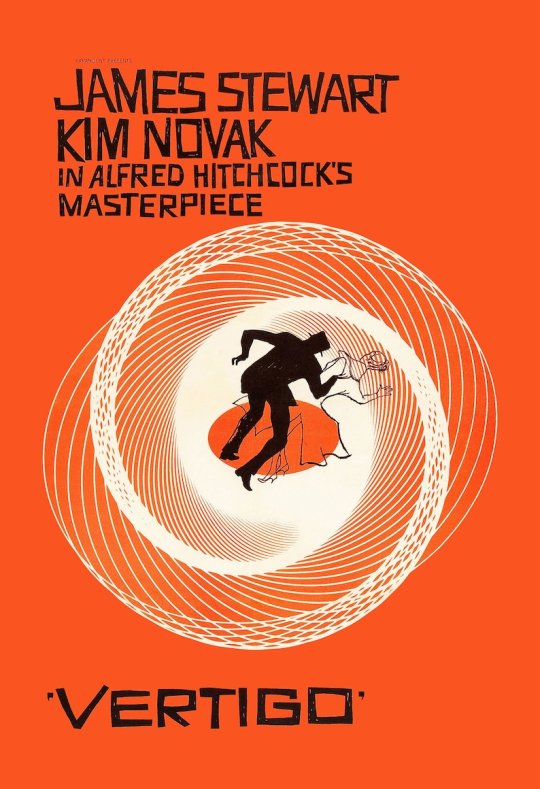
Anatomy of Hell (2004) dir. Catherine Breillat
Song of Love (1950) dir. Jean Genet
The Meetings of Anna (1978) dir. Chantal Akerman
Cries and Whispers (1972) dir. Ingmar Bergman
Singapore Sling (1990) dir. Nikos Nikolaidis
Vertigo (1958) dir. Alfred Hitchcock
Inspired by @wombesties one, tagging @amourduloup if you feel like it<3
8 notes
·
View notes
Text

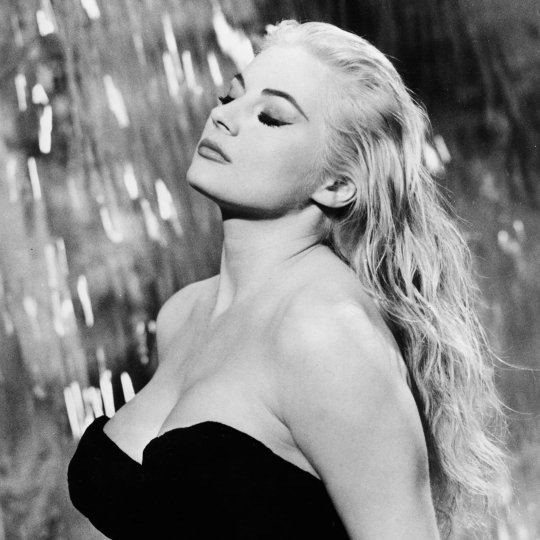
Propaganda
Xia Meng, also known as Hsia Moog or Miranda Yang (Sunrise, Bride Hunter)—For those who are familiar with Hong Kong's early cinema, Xia Meng is THE leading woman of an era, the earliest "silver-screen goddess", "The Great Beauty" and "Audrey Hepburn of the East". Xia Meng starred in 38 films in her 17-year career, and famously had rarely any flops, from her first film at the age of 18 to her last at the age of 35. She was a rare all-round actress in Mandarin-language films, acting, singing, and dancing with an enchanting ease in films of diverse genres, from contemporary drama to period operas. She was regarded as the "crown princess" among the "Three Princesses of the Great Wall", the iconic leading stars of the Great Wall Movie Enterprises, which was Hong Kong's leading left-wing studio in the 1950s-60s. At the time, Hong Kong cinema had only just taken off, but Xia Meng's influence had already spread out to China, Singapore, etc. Overseas Chinese-language magazines and newspapers often featured her on their covers. The famous HK wuxia novelist Jin Yong had such a huge crush on her that he made up a whole fake identity as a nobody-screenwriter to join the Great Wall studio just so he can write scripts for her. He famously said, "No one has really seen how beautiful Xi Shi (one of the renowned Four Beauties of ancient China) is, I think she should be just like Xia Meng to live up to her name." In 1980, she returned to the HK film industry by forming the Bluebird Movie Enterprises. As a producer with a heart for the community, she wanted to make a film on the Vietnam War and the many Vietnam War refugees migrating to Hong Kong. She approached director Ann Hui and produced the debut film Boat People (1982), a globally successful movie and landmark feature for Hong Kong New Wave, which won several awards including the best picture and best director in the second Hong Kong Film Award. Years later, Ann Hui looked back on her collaboration with Xia Meng, "I'm very grateful to her for allowing me to make what is probably the best film I've ever made in my life."
Anita Ekberg (War and Peace, La Dolce Vita)— I'm going to be frank with you. Every time I look at this woman, I lose my ability to form sentences.
This is round 4 of the tournament. All other polls in this bracket can be found here. Please reblog with further support of your beloved hot sexy vintage woman.
[additional propaganda submitted under the cut.]
Xia Meng:
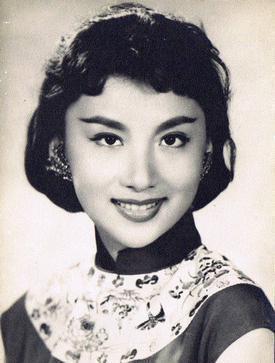

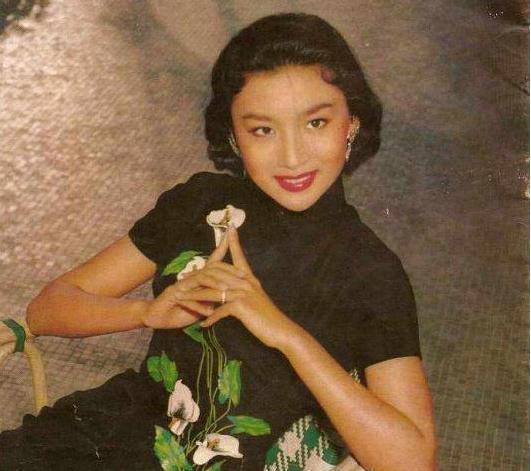

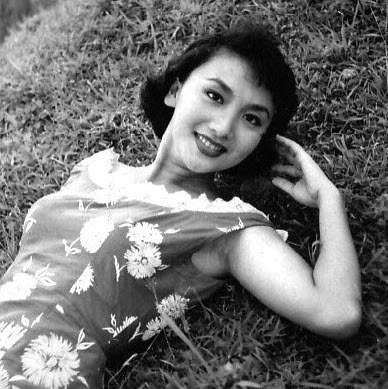
Anita Ekberg:
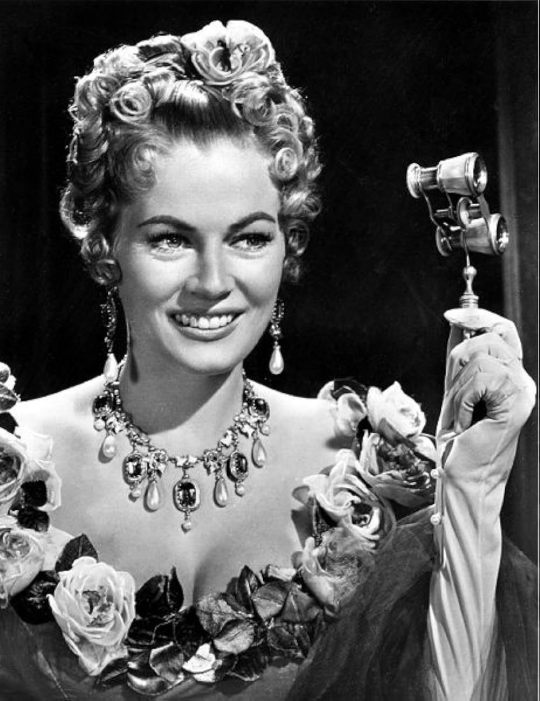
“I haven't seen much starring her (YET) but the scene of her in the Fontana di Trevi in La Dolce Vita is some of the most jealous I've ever been of Marcello Mastroianni maybe and that's saying a lot. Cinema history. Historical.”


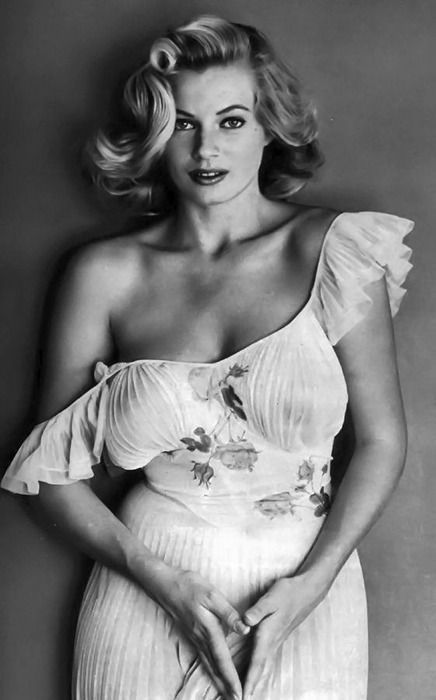
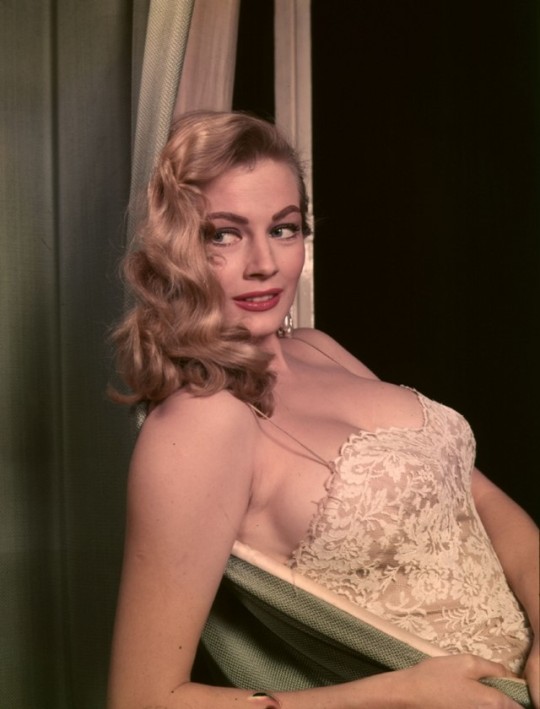
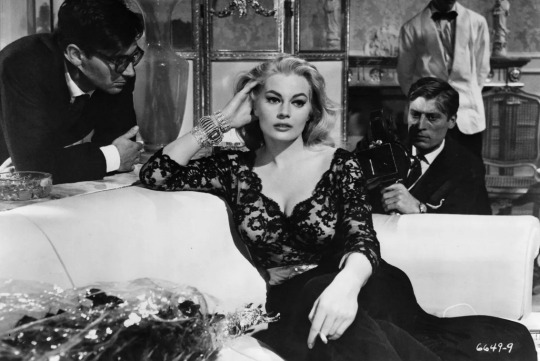
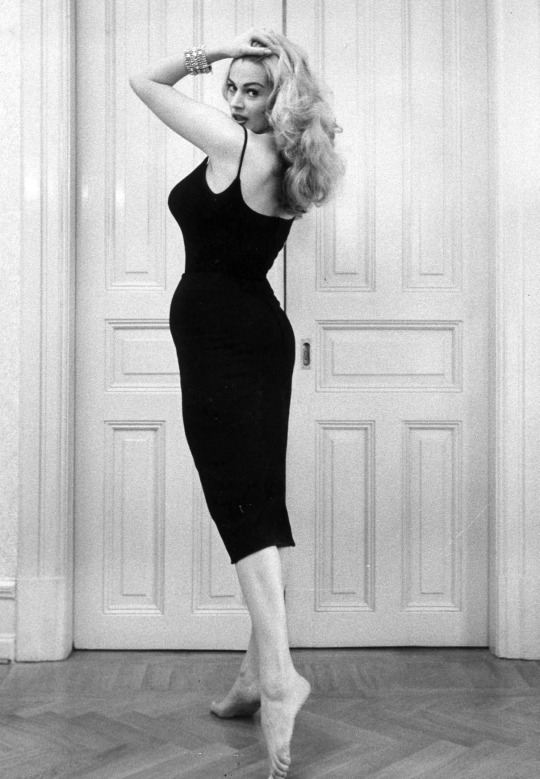
263 notes
·
View notes
Text
Acclaimed Dutch architect Rem Koolhaas described it a masterpiece of experimental architecture. Singaporeans were drawn to it for its atmosphere and the abundance of cheap Thai food. For Thais living in Singapore, it was a home away from home.
Golden Mile Complex, also known as Little Thailand, was sold in 2021 to a consortium which will redevelop the building. As it has been gazetted as a conserved building by the Urban Redevelopment Authority, its physical structure is likely to be preserved. However, the same cannot be said for its unique character. Its tenants – a mix of inexpensive Thai eateries, seedy bars and tiny shops selling Thai perishables – were given until May 2023 to move out. Now that they have dispersed, they are unlikely to return.
As an era in the building’s history ends, it is timely to look back at its history, which goes back five decades.
Building Golden Mile Complex
Officially opened on 28 January 1972, Golden Mile Complex was an urban renewal project by the government to “redevelop and rejuvenate the slum-ridden areas in the Singapore city centre”.1 In the 1960s, the site was home to squatter settlements, small-time furniture and rattan makers, and the Kampong Glam Community Centre.2
In June 1967, then Minister for Law and National Development E.W. Barker announced that the area would be one of 14 urban redevelopment projects which would be transformed – resulting in modern skyscrapers, luxury apartments, hotels and shops – to give rise to a “new look Singapore”. These projects would involve the participation of private enterprises.3
Singapura Developments won the tender for the three-acre site that would eventually host Golden Mile Complex with a proposal for a building by the architecture firm Design Partnership (now known as DP Architects), which was then helmed by William S.W. Lim, Tay Kheng Soon and Koh Seow Chuan. The three men had convinced Singapura Developments to bid for the site in May 1969, offering the unusual proposition for a single building that would integrate shops, offices and apartments. Although the concept differed sharply from the government’s original proposal for luxury apartments on the plot, Lim, Tay and another architect, Gan Eng Oon, proved their design could work with an economic feasibility study that included precisely calculated land and sale prices.4
The all-in-one design of Golden Mile Complex marked a significant shift from how city planners in Singapore then traditionally segregated areas into different zones for “live, work, play”. In fact, it embodied Lim’s vision for “megastructures” that would contain all the functions of a city within a building, which he believed to be the future of Asian cities.
“We must reject outdated planning principles that seek to segregate man’s activities into arbitrary zones, no matter how attractive it may look in ordered squares on a land use map. We must reject arbitrary standards laid down that limit the intensive use of land,” said Lim and Tay as part of an essay for the Singapore Planning and Urban Research Group that was published in Asia Magazine in 1966.5 This vision was realised in Golden Mile Complex: a concrete megastructure that became one of the earliest mixed-use developments in Singapore and Asia.6
In January 1970, Singapura Developments began marketing the property and declared that “The Golden Mile Race Is On”. All 64 apartments were snapped up within a month, and most of the offices and shops were sold by the time building works commenced in May 1970.7
The building was originally named Woh Hup Complex, after the parent company of Singapura Developments. Rising 16 storeys, the edifice was designed in the Brutalist style popular in Europe and North America from the 1950s to the 1970s.8 It was constructed in a stepped terraced design held up by two end pillars that each adorned a star logo by Singapore’s leading graphic designer William Lee.9 Such a facade maximised waterfront views for the 64 apartments and maisonette penthouses spread across the topmost seven floors.
The next six floors housed 210 offices and studios to complete the tower that was seemingly pried apart in the middle. This sheltered a residential play deck facing Beach Road on the 10th storey while letting in natural light and ventilation into the office corridors and a three-storey podium. The latter comprised 360 shops that sat atop a basement carpark for 550 vehicles.
Completing the facilities was a four-storey residential car park at one end of the building that was topped with an open-air swimming pool overlooking the former Crawford Park. All these different functions were connected by corridors, including a “street” that ran through the podium of shops. The result was an interiorised environment designed to “encourage human interaction and intensify public life”.10
A Hub of Modernity
Woh Hup Complex was part of a pioneering wave of shopping centres to open in Singapore in the early 1970s, along with People’s Park Complex in Chinatown and Tanglin Shopping Centre and Specialists’ Centre in the Orchard Road area.
Like many of the complexes built then, Woh Hup Complex was also a strata-titled development. This form of property ownership was introduced by the government in 1968 to allow individual owners to have a share of a land. It allowed property developers to quickly recoup their investment by tapping on a pool of buyers, and also enabled individuals to participate in the on-going modernisation of Singapore.11
Woh Hup Complex offered shop lots in various sizes, starting from a 144-square-foot lot for just $16,500.12 The prices were lower compared to other shopping centres because the complex was at the city centre fringe. But its developer remained bullish about its prospects. “We offer easy parking, no frayed nerves while coming up here,” said T.M. Yong, a director at Singapura Developments. “Our shop owners will most probably be able to offer goods at lower prices.”13 The earliest tenants in the complex were an eclectic mix of shoe retailers, beauty salons, photo studios, furniture suppliers, travel agents, eateries, restaurants and nightclubs.14
As one of the first buildings to offer modern office spaces in Singapore, Woh Hup Complex attracted many businesses too. Singapura Developments and its parent company Woh Hup as well as Design Partnership set up offices in the building.15 The complex also became known for its many architecture and engineering firms, including OD Architects who were conceiving the masterplan for the National University of Singapore’s Kent Ridge campus, Cardew and Rider Engineers who were working with Design Partnership on Marina Square, and several engineering firms involved in the construction of Singapore’s up-and-coming Mass Rapid Transit network.16
But a decade after the complex opened, there were complaints of interrupted water supply, faulty air-conditioning and lifts, leaking roofs, rotting ceiling boards, rubbish piling up along the corridors, and broken or missing lights.17 These were reported after Woh Hup exited the property market and sold Singapura Developments along with its properties to City Developments in 1981.18 Woh Hup Complex was then renamed Golden Mile Complex.
The Rise of “Little Thailand”
By the mid-1980s, many of the building professionals had moved their offices elsewhere and Golden Mile Complex became better known as the haunt of foreign construction workers, specifically those from Thailand.
After work, particularly on Sundays and public holidays, homesick Thai workers thronged Golden Mile Complex to drink Singha beer, catch up on news back home by reading Thai newspapers, and listen to Thai music on cassette tapes. The draw for most was the various eateries selling Thai food at reasonable prices on the ground floor. Not only did these establishments serve food just like home, they served them on tables and chairs “scattered in front of food shops” or along the corridors and the concourse – just “[like] a street corner in Haadyai or Bangkok”.19
Golden Mile Complex was also the terminal for tour buses plying the Singapore-Haadyai route operated by travel agencies located in the complex and the neighbouring Golden Mile Tower. As the Thai clientele in the complex grew, it became referred to as “Little Bangkok” and “Little Thailand”.20 The Thai community injected new life into what was then a rapidly ageing Golden Mile Complex, and attracted even more shops to serve the community. A tailor in the complex reportedly expanded from one shop to seven to sell all things Thai, while a “100% genuine Thai style” disco named Pattaya opened in 1988 on the second floor.21 There was even a 50-seat “cinema” that screened kick-boxing specials and Thai features at $3 a ticket.22
In 1986, the Straits Times reported that Golden Mile Complex “would be a ghost town but for the office workers, who appear at lunch time, and the Thais, who have made it their haunt”. Dorothy, a secretary working in an architecture firm in the complex, told the Straits Times: “Before the Thais started coming here about four years ago, the place was very dead. Now, it’s sometimes so noisy that you get a headache.” Because fights would occasionally break out, she was not a fan of the place. “For Thai food, I’d rather go to Joo Chiat,” she added.23 Her sentiments were shared by many other Singaporeans who avoided Golden Mile Complex on Sundays.
As one shopowner explained: “Our Sunday business has been hit. Some customers stay away because of the Thai character of the place.” A food stall operator added: “The Thais linger for hours, drinking beer and eating their favourite beef noodles. Sometimes, they fight among themselves over a few drinks.”24
It did not help that migrant workers and the complex were often in the news for the wrong reasons. As part of the government’s massive crackdown on illegal migrants in March 1989, 370 suspected Thai undocumented workers at Golden Mile Complex were nabbed in a single operation.25
National Icon or National Disgrace?
In 1994, Rem Koolhaas visited Singapore and marvelled at its development in his seminal essay “Singapore Songlines”. He was particularly captivated by Golden Mile Complex and People’s Park Complex, which he praised as “‘masterpieces’ of experimental architecture/urbanism”.26 On his next visit to Singapore in 2005, Koolhaas said: “These buildings were not intended to be landmarks but became landmarks. Yesterday, I went to see all the buildings again, and they are absolutely stunning, radical and amazing.”27
While Koolhaas and many in the architecture fraternity saw Golden Mile Complex as the future, most Singaporeans regarded it as a relic of the past. By the 1990s, a slew of new shopping centres had sprung up near the complex, including Raffles City, Bugis Junction, Suntec City, Millenia Walk and Marina Square. Many felt Golden Mile Complex and other strata-title malls were simply no match for these single-owner developments that could plan a more attractive retail mix to woo shoppers.28 A 1996 article in the Straits Times assessed that Golden Mile Complex was unlikely to change because of its ownership structure and should simply “fill [the] low-end gap”.29
The disconnect between Golden Mile Complex’s celebrated architecture and its decline came to a head in 2006. During a parliamentary session on 6 March, then Nominated Member of Parliament Ivan Png called it a “vertical slum”. He was particularly irked by how each individual owner had added “extensions, zinc sheets, patched floors, glass, all without any regard for other owners and without any regard for national welfare”, resulting in “a terrible eyesore and a national disgrace”.
“The appearance of Golden Mile Complex appals me whenever I drive along Nicoll Highway. It must create a terrible impression on foreign visitors arriving from the airport. How can we be a world-class city in a garden? The Golden Mile Complex is just the most extreme of how a strata-title property can deteriorate,” he said.30
This came just after Golden Mile Complex was featured in Singapore 1:1 – City, a publication showcasing significant architecture and urban design in the city-state.31 “That’s a real joke!” said Png. “Can you imagine if that thing was standing on the Singapore River between OCBC Building and UOB Centre?” He added: “It just gives me goosebumps. It’s so close to the city, yet it’s so unlike Singapore – orderly, tidy, everything neat. It’ll drag us down.”32
Not everyone agreed with his criticism. Retiree Evelyn Ong, who moved into the complex in 2005, immediately booked her 11-storey apartment after seeing the breathtaking views. She said: “Once I stepped in and saw the view, I said book, book, must book.” She bought her 1,000-square-foot apartment for about $310,000, and spent about $70,000 on renovations to make it look like a holiday resort. “I think I’m very lucky. It’s so difficult to find such a nice view. Every day, I sit here (at my balcony) and I can see the beautiful lights at night.” She agreed that more could be done to spruce up the building though.33
The local architecture fraternity pushed back against Png’s comments. In August 2006, Calvin Low, a trained architect and journalist, kickstarted a monthly series on local architecture in the Straits Times and titled his first article “Golden Mile Still Shines”.
“The architectural thesis that GMC [Golden Mile Complex] represented was revolutionary – not just for Singapore but globally, too. It stood as a concrete realisation of the architects’ vision of a futuristic city-within-a-building that offered a whole, new integrated way of living in a modern, tropical, urban Asian context,” he wrote.34
In November the same year, a collective of architects, designers and artists known as FARM launched “Save the Modern Building Series”, a lineup of talks to raise awareness of the complex and other pioneering modern buildings such as Pearl Bank Apartments.35 In November 2007, the inaugural architecture festival, Singapore ArchiFest 07 – organised by the Singapore Institute of Architects to celebrate Singapore’s built environment – featured tours of the complex conducted by architecture students from the National University of Singapore.36
A Landmark Saved, a Community Lost
In August 2018, news broke that more than 80 percent of the owners of units in the complex had agreed to put the building up for an en bloc sale at $800 million. This came hot on the heels of the sale of another modernist icon, Pearl Bank Apartments,37 just six months earlier. Heritage and architectural experts were dismayed at the news. “It will be a tragedy and a great loss to Singapore if the en-bloc sale results in the demolition and redevelopment of such an important urban landmark with such high architectural and social significance,” said heritage conservation expert Ho Weng Hin.38
Although architects and academics petitioned for Golden Mile Complex to be conserved, residents were in two minds about it. The complex’s long-time residents confessed they could no longer keep up with the building’s maintenance needs. “The problem is that it’s an old building, and when it rains, the water seeps through some of the walls. The building has water-proofing issues,” said Ponno Kalastree, who had lived and worked there since 1989. He was among those who had voted for the sale and was planning to downgrade to a Housing and Development Board flat, but admitted that he would miss the place.39
To the surprise of many, the Urban Redevelopment Authority (URA) told the Business Times in October 2018 that they have “assessed the building to have heritage value, and is in the process of engaging the stakeholders to explore options to facilitate conservation”. “Modern architecture, dating from our recent past, is a significant aspect of our built heritage, and we have selectively conserved a number of such buildings. Where there is strong support and merits for conservation, we will work with the relevant stakeholders to facilitate the process,” said the URA. This meant that the existing building could be retained while a new block would be added next to it.40
The tender closed in January the following year without any offer, and a second tender launched just two months later with the same terms and price tag of $800 million suffered the same fate.41
Almost one year after the two failed collective sales, the URA announced in October 2020 that it was officially proposing Golden Mile Complex to be conserved in light of its historical and architectural significance.42 When it was gazetted a year later in October 2021, Golden Mile Complex became the “first modern, large-scale strata-titled development to be conserved in Singapore”.43
The owners relaunched an en bloc sale in December that year at the same price of $800 million.44 This time, the sale was successful and the complex was sold in May 2022 to a consortium comprising Far East Organization, Sino Land and Perennial Holdings. Although their bid was $100 million lower than the reserve price, the owners agreed to the sale within “a record time of 15 days”.45
At the point of publishing this essay, the new owners have yet to reveal how they plan to redevelop Golden Mile Complex, though it is unlikely that any of the former tenants will return. The battle to conserve Golden Mile Complex has, ironically, cost the community who kept it alive when others moved on to swankier new buildings. But all, however, is not lost. The redevelopment of Golden Mile Complex could serve as a model for how other similar buildings in Singapore can be conserved and enjoy a new lease of life for the future.
9 notes
·
View notes
Photo
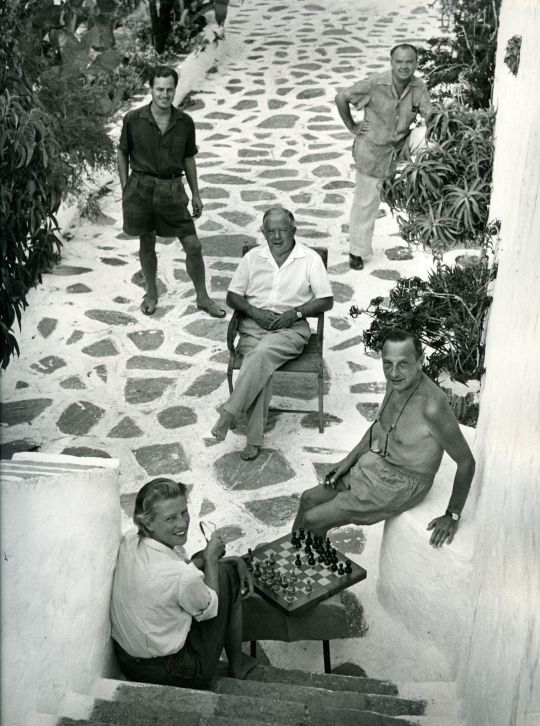
On the coast of Terra Fermoor, when the wind is on the lea,
And the paddy-fields are sprouting round a morning cup of tea,
Sits a lovely girl a-dreaming, and she never thinks of me.
No, she never thinks of me
At her morning cup of tea,
Lovely girl with moon-struck eyes,
Juno fallen from the skies,
At the paddy-fields she looks
Musing on Tibetan books,
On the Coast of Terra Fermoor high above the Cretan Sea.
Melting rainbows dance around her – what a tale she has to tell,
How Carmichael, the Archangel, caught her in the asphodel,
And coquetting choirs of Cherubs loudly sang the first Joel,
Loudly sang the first Joel
To their Blessed Damozel.
Ah, she’s doomed to wane and wilt
Underneath her load of guilt;
She will never, never say
What the Cherubs sang that day,
When the Wise Men came to greet her and a star from heaven fell.
Ah, her memory is troubled by a stirring of dead bones,
Bodies that a poisoned poppy froze into a heap of stones;
When the midnight voices call her, how she mews and mopes and moans.
Oh the stirring of the bones
And their rumble-tumble tones,
How they rattle in her ears
Over the exhausted years;
Lovely bones she used to know
Where the tall pink pansies blow
And her heart is sad because she never saw the risen Jones.
Cruel gods will tease and taunt her: she must always ask for more,
Have her battlecock and beat it, slam the open shuttledore,
Till the Rayners17 cease from reigning in the stews of Singapore.
She will always ask for more,
Waiting for her Minotaur;
Peering through the murky maze
For the sudden stroke that slays,
Till some spirit made of fire
Burns her up in his desire
And her sighs and smiles go floating skyward to the starry shore.
- Maurice Bowra, On the Coast of Terra Fermoor (10 June 1950)
The controversial Oxford scholar, poet, wit and acquaintance of Patrick and Joan Leigh Fermor, Sir Cecil Maurice Bowra, wrote two poems (in 1950) that poked fun at Paddy’s relationships with Balasha Cantacuzene - his first great love - and Joan Leigh Fermor - his life long lover and eventual wife.
The poems remained hidden from public view until Henry Hardy (also know as Robert Dugdale) published Maurice Bowra’s scabrous satires on his contemporaries, New Bats in Old Belfries, in 2005, as one of Bowra’s literary executors. At the time Hardy had to leave blank spaces where two of them should have appeared. This was because their subject, Patrick Leigh Fermor, was still alive, and was unwilling to give his approval for their inclusion in his lifetime - Paddy died in June 2011, aged 96. One can only speculate why Bowra, who had a decent friendship with Fermor, would want to target Paddy Fermor in this way. Fermor after all was a celebrated writer, traveller - and Cretan war hero as a result of his activities while serving in the Special Operations Executive during the second world war.
In an extended correspondence with Hardy in his capacity as one of the editors of Bowra’s poems, PLF showed that he was much put out by the ones on himself, especially ‘The Wounded Gigolo’, which he felt was ‘a bit cracked’. He vacillated about the other poem, ‘On the Coast of Terra Fermoor’ (why did Bowra misspell ‘Fermor’?), but in the end voted against, no doubt partly influenced by the opinion of his late wife, Joan, who ‘thought that all the people mentioned in the collection would have been cut to the quick, however much they put on non-spoilsport faces.’ When James Morwood of Wadham visited him later in his Greek home to ask about his friendship with Maurice Bowra (on behalf of Leslie Mitchell, Bowra’s biographer), he found that the hurt of reading the poems was still smarting. Paddy Fermor would write to Henry Hardy to say: ‘Could Maurice’s shade ponder all this now, I think I might emerge as more of a saviour than a spoilsport.’ Paddy would express how deeply wounded he was by Bowra in his correspondence with the Duchess of Devonshire.
In April 2022, I visited the home of Patrick and Joan Leigh Fermor in Kadarmyli in the Peloponnese as part of hiking and mountaineering sojourn around Greece with friends. Afterwards, back in London, I was having a family dinner which included some of my grandparents’ circle of friends in which they recalled Lord Noel Annan (he died back in 2000), the great doyenne of British academia and chronicler of his age, that Maurice Bowra was madly in love with Joan Leigh Fermor - which went unrequited.
For Bowra, Joan Eyres Monsell (1912–2003), daughter of the 1st Viscount Monsell, was his greatest love. He was devastated when she took Paddy Leigh Fermor as her second husband in 1968 after a long time living together unmarried. And he was probably more put out because the Fermors had an open relationship - or more truthfully one sided as Joan let Paddy indulge in his amorous dalliances with other women always knowing he would come back to her. Bowra described her as his ‘beautiful friend’, and Alan Pryce-Jones, her former fiancé, recalled her as ‘very fair, with huge myopic blue eyes’. Cyril Connolly, another admirer, attributed to the fictional Jane Sotheran (in his story ‘Happy Deathbeds’) Joan’s alluring physical qualities, including ‘enormous eyes of clouded violet-blue’.
In my own view is that these poems are tawdry and in bad taste. It captures perfectly - from what I’ve read or heard from others - the mean spiritedness of Maurice Bowra if you got on his bad side.
Bowra, classical scholar, warden of Wadham College, Oxford, for more than 30 years, and vice-chancellor of the university from 1951 to 1954, was the quintessential don. His learning across several languages and literatures puts most modern academics to shame. Yet this expansive erudition contrasts with the tightly knit provincial world in which he lived. Oxford was everything to Bowra. Bowra had a commanding, narcissistic personality that, within the narrow horizons of Oxford, resulted in much distasteful social and professional manoeuvring.
I think many of his peers would agree that Bowra's writings never matched the brio of his conversation. His epigrammatic wit is frequently compared with Oscar Wilde's, but Bowra's one-liners, for all their cleverness, lack the warmth and wisdom of a Wildean paradox. His most famous is a riposte to one who queried the plainness of a prospective wife: "Buggers can't be choosers." Other famous adages include his self-description as "more dined against than dining" and his claim that Noel Annan's feelings ran "only sin deep". Ultimately, this wordplay amounts to little more than high-brow camp: a sort of Carry On Common Room.
For the record Hardy outlines that Bowra’s literary models with this poem here are Kipling’s ‘Mandalay’ (1892) and Edward Lear’s ‘The Courtship of the Yonghy-Bonghy-Bo’ (1877). Other allusions may be glossed as follows. ‘Carmichael’: members of the Cretan Resistance used ‘Kyr Michali’ (‘Mr Michael’) as a code-name for Paddy Leigh Fermor. ‘Joel’: perhaps a fusion of ‘Joan’ and ‘Noel’. ‘Damozel’: from Dante Gabriel Rossetti’s eponymous poem. ‘Poppy’: a reference to Thérèse (‘Poppy’) Fould-Springer (1908–53), who suffered from sporadic mental and physical illness, and married Alan Pryce-Jones after his engagement to Joan Eyres Monsell had been ended by her parents’ opposition (he had no clear prospects). ‘Rayners’: John Rayner (1908–90), features editor of the Daily Express during the 1930s, had been Joan Eyres Monsell’s first husband.
Photo: Patrick Leigh Fermor (far left), Cyril Connolly (far right), Maurice Bowra (centre), Ernst Kantorowitz (bottom right) and Joan Leigh Fermor, 1955.
#bowra maurice bowra#quote#poem#patrick leigh fermor#joan leigh fermor#leigh fermor#friendship#society#british#oxford#university#love#history#greece#family#personal
36 notes
·
View notes
Note
Inspired by our other conversation. If you were put in charge of the next HHN, you can make the houses, the stories to them and the scarezones, what would you do?
Kinda like the HHN wishlist but I am curious of what you would do in the details of it. 👀
- @classicdeadfan
*SQUEALS OF PURE DELIGHT*
@classicdeadfan, you have no idea how much I wanted to talk about something like this! I love haunted houses, scarezones, and Halloween in general, so of course I would have tons of ideas as to how I would develop a proper attraction!
The Main Theme:
Now, I never really thought about an overall theme for HHN, mainly because I only ever thought about specific themes for houses and scarezones. Although, the more I think about it, the more I'm leaning toward a "deranged artist" horror story theme. I know that The Director is a "deranged artist" that already exists within the HHN-verse, but I was thinking more along the lines of the Killustrator from Singapore's HHN event.
Or perhaps, Sander Cohen from BioShock.

Okay, maybe not him specifically, but an Icon character much like him. If there's anything I love, it's the concept of an artist who uses murder and other horrific ways to create masterpieces.
Another thing I also really want is Cindy to make her appearance as an Icon (she was going to be one years ago, but she was switched due to the multiple child kidnappings in Florida at the time).
So... Cindy + "Deranged Artist" = A very meta main storyline where Cindy, after years of being promised to have her own "Icon"ic debut, finally lashes out against Universal Studios for denying her the chance to shine. With a cursed sketchbook in hand, Cindy unleashes her twisted, child-like drawings into the streets, killing anyone and everyone in their path.
2. The Scarezones:
I'm going to do five scare zones for my HHN event because there were five of them last year, and honestly, there are so. many. ideas.
Halloween Horror Nights 32: Drawn in Blood - the main entrance to the entire event. Cindy has finally taken over Halloween Horror Nights as her personal canvas and the blood of those who denied her years ago is the ink of her pen. You will encounter Universal Studio employees and creative teams being torn apart, gutted, beheaded, and tortured by her living creations. Her father, the Caretaker, will also be there, supporting his daughter as she wreaks havoc. Beware of Cindy, or else you will become her next biggest inspiration!
Army of Frankenstein - the scarezone spin-off to The Bride of Frankenstein Lives, where the Bride's various experiments have now been released into the outside world. Cower in fear as you witness villagers get attacked by these man-made beasts and are forced to bow before their malevolent conqueror. Nothing will stop the Bride from hunting down all of mankind until she either wipes them out or until they surrender to her...
Vamp '32 - a "prequel" to Vamp 85. Set in the year 1932, the Great Depression has fallen upon all of humanity. Where life has become difficult, death is now far easier than ever before! Enter the party of the century as poor souls are tricked into getting easy employment for the hosts and higher-ups. In the world of undead flappers and gangsters, fresh blood is the most valuable of all!
Bugs: Unleashed! - the sequel to Bugs: Eaten Alive. After the failure and destruction of Buzzcon, the mutated bugs are now taking over the world! Step into the 1950s as a suburban neighborhood becomes a hot spot for breeding and human food supplies, and armies are just about helpless in fighting these bugs off. You better BUZZ off, or else you're dead meat...
Haunted Couture - inspired by Vanity Ball, this scarezone has turned into an exclusive R.I.P. tour of the "Gore"-geous world of fashion. Using the leftover flesh from her previous massacre (main entrance), Cindy's revenge has taken to new heights as her victims become living mannequins for all to see and scream! As someone once said: "Beauty is pain."
3. The Haunted Houses:
All of these are not in a particular order, as I am searching through wiki pages and whatnot to come up with some good house ideas.
Vikings Undead: Glory and Gore - a previous scarezone turned haunted house. Follow along with an excavation team and witness their newest discovery yet: an unknown burial mound that holds the remains of an ancient Viking king named Audun the Unyielding. Little did they know that their trespassing has cursed them all and he and his Draugr army now rises to satiate their bloodlust. Face your fears in battle and prove yourself worthy of the gates of Valhalla!
Terrifier - an IP haunted house about Art the Clown and his menagerie of gore. Venture through the dingy neighborhood as you are caught in the midst of a grisly murder spree, and Art is on the hunt! This maze is not for the squeamish or the faint of heart... Use your wits to escape, or die trying!
Universal Studios: Opera of Terror (Phantom/Dracula maze) - the sequel to the Universal Monsters line-up. A mob has risen to take down the infamous Opera Ghost as Christine Daae is in his clutches. But as the Creature from the Black Lagoon emerges from the depths of the sewers, chaos unfolds as the two iconic Monsters battle it out for Christine's love. Bodies will drop (as well as the chandelier... again!). Who will win, and who will drown in defeat?
Yokai Hotel (Japanese Creature maze) - Check-in into one of Japan's finest hotels for a night or two... but watch out! This modern hotel has a secret: within its wall remains an ancient curse and the ghouls had taken their place as its eternal residents. You will encounter vengeful ghosts, horrifying demons, and unsettling creatures as they try to feast on your soul. As you go deeper, you will unlock the secrets behind the owner's lineage and what their true intentions are.
Feartime Emporium (Devil Dogs) - Schittie's Kidz from Slaughter Sinema has now become a funhouse of death! Enter Lizzy Lemming's Funtime Emporium as the children within turn psychotic and kill anyone they see. Climb through the booby-trapped playgrounds, sneak through the blood-soaked arcade center, and pray they don't catch you. And whatever you do, let them eat cake... and pizza... and whatever the hell else they want!
SyFy's Chucky - the official HHN house of this year... very self-explanatory!
Retail Hell (original) - it turns out that working in retail isn't all that it's cracked to be. The horror comedy maze of the HHN event, Retail Hell is a minimum wage employee's worst nightmare. A "Karen" has been infected with rabies, and now every "Karen" and "Ken" are going into an animalistic rage, ripping human flesh with their teeth! Survive your way along with the employees and security as you fight against these ballistic zombies. The main mission? Protect the manager at all costs.
Dollhouse of the Damned: Restitched - the popular haunted house from HHN 24 (2014) has finally returned with a vengeance! Revisit the horrors of the dollhouse, now with brand new scares and even more terrifying toys to be frightened of. As you enter, you will experience a realm where good toys go to die and evil comes out to play. Once again, this house is no child's play!
Horrormoon Suite (original) - during the 1970s, Cupid's Arrow Resort was once the perfect place for newlyweds to spend their post-wedding days together. To this day, it lays dilapidated... but far from abandoned. Within its graffitied walls resides a cult of "Undesirables" - people who were rejected in terms of love. In the hopes of finally having love in their life, the Undesirables will do anything to achieve an inkling of romance. Anything...
Legends of London (original) - Jack the Ripper is not the only terror that stalks the foggy streets of London. The city is wrought with death and cruelty, fictional or otherwise, all the way back to the days of kings and queens. Travel through time as you are haunted by the dead and hunted by the deranged. What will it be: slaughtered in an alleyway? Cooked into a meat pie? Or perhaps, beheaded for crimes you never committed?
#I'm sorry if some of the mazes you're looking forward to aren't on here#halloween horror nights#HHN 32#my HHN event#ideal HHN event#fan wishlist#HHN#universal studios#answered asks
18 notes
·
View notes
Photo

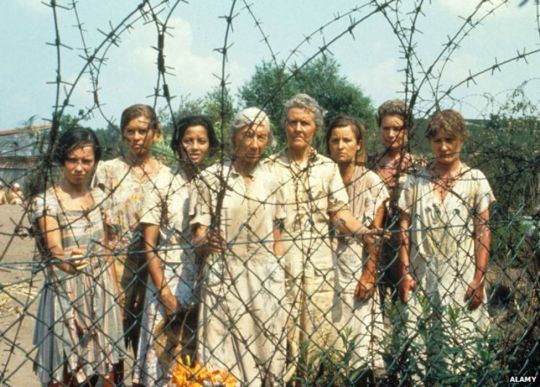
Doctor Margaret Thomson was born on August 20th 1902.
Born as Margaret Hunter in Leith, she went to Edinburgh Ladies College and then to the University of Edinburgh where she qualified as a doctor in 1926. Margaret married a rubber planter and went to live on Carey Island in what was then Malaya.
Margaret was one of six children and the third of four daughters of George Alexander Hunter, a bank secretary and solicitor, and his wife Margaret, née Robertson.
She had a comfortable upbringing and attended the Edinburgh Ladies College, an independent school now known as The Mary Erskine School. She went from there to Edinburgh University to study medicine, graduating in 1926 alongside one of her sisters.
Margaret Hunter became a GP in Lanarkshire where she met and married Daniel Thomson, a rubber planter and agricultural engineer by profession. The couple moved to a rubber plantation near Kuala Lumpur in what was then the Federated Malay States but which is now Malaysia, and Dr Thomson went to work in the local medical services.
When World War two broke out the Japanese army rampaged through Malaya in December 1941 and January 1942.
Dr Thomson and her husband went to Singapore where the British forces and civilian refugees were gathering. After the British and Commonwealth forces were soundly beaten, Dr Thomson tended to the wounded who were brought to the city.
The last ship to leave Singapore before its surrender was the SS Kuala and Margaret was on board, having been separated from her husband who was duly captured by the Japanese.
The Kuala was bombed at sea and sank, Dr Thomson being seriously wounded in the leg during the attack. The Japanese aircraft strafed the survivors in the water but she was rescued from the sea by Raymond Frazer of the RAF who got her into a lifeboat. There she cared for other wounded passengers using wreckage from the ship as makeshift splints, and then took part in an epic eight-hour row before the lifeboat was taken by Chinese fishermen to relative safety on Kebat and then Senajang islands.
There, despite her serious leg wound, she set about organising the medical care of the wounded and injured, carrying out several emergency operations.
Her wounded thigh turned septic and she was taken by stretcher to Sinkep from where she left with other women survivors to try and evade the Japanese. She was captured in Sumatra, however, and imprisoned in the brutal Djambi jail and then an even more primitive prisoner of war camp at Irenelaan, where another Scottish inmate was Norah Chambers who organised a choir to maintain morale.
The guards refused to pass on Red Cross medical supplies and Dr Thomson had to endure the deaths of many of her patients in the camp.
News of her courage on board the Kuala had been passed back to London and in August 1943 she was awarded the MBE “for her resolution and disregard of self, her sacrifice and admirable courage”, as stated in her citation.
Unbeknown to Thomson, her husband had been captured and made to work on the infamous Burma railway. Both of them survived, however, and returned after the war to the rubber plantation where she set up a health clinic.
The Thomsons came back to Scotland in 1950 and set up what was described as an innovative farm near Huntly. Daniel Thomson died in 1971 and Margaret lived on at Huntly until her own death on June 16, 1982 at the age of 79.
Her story was mentioned in several books and she really did advise the BBC on Tenko, but she never enjoyed talking about her wartime experiences. She never once watched an episode of the series.
There is no great monument to Dr Margaret Thomson as far as I know, but then there are precious few memorials to the women and men like her who were civilians who made their own contribution to the war effort.
62 notes
·
View notes